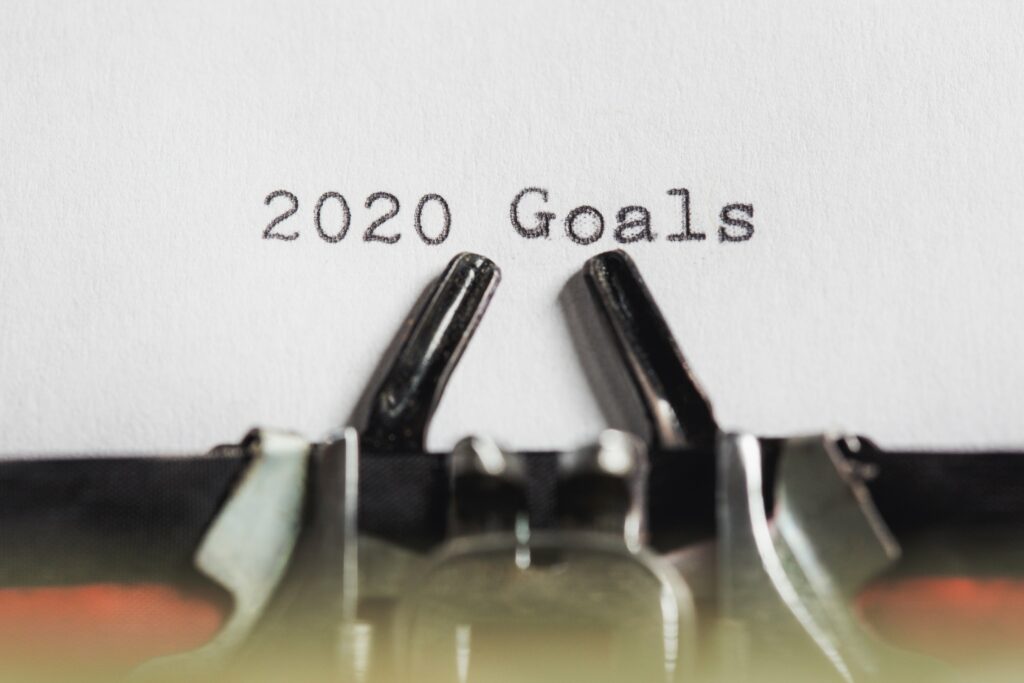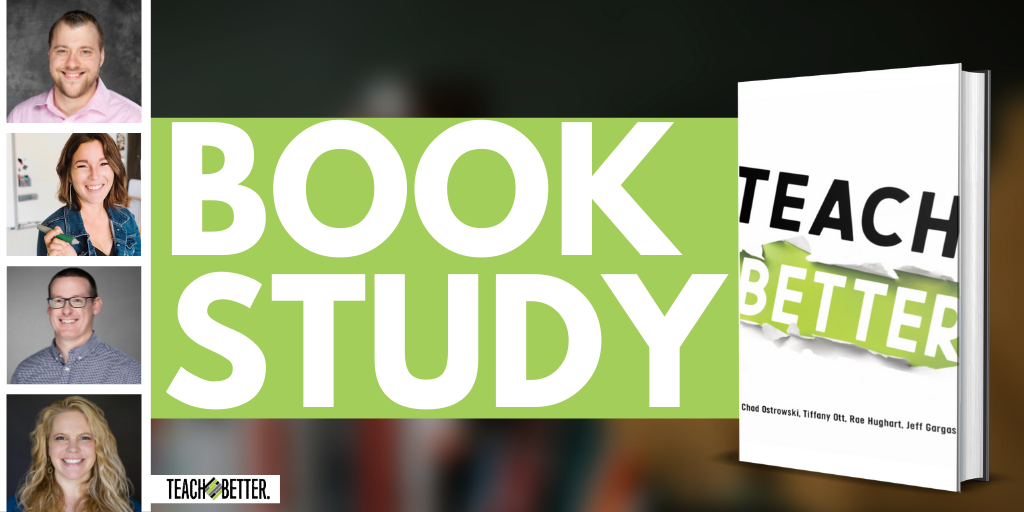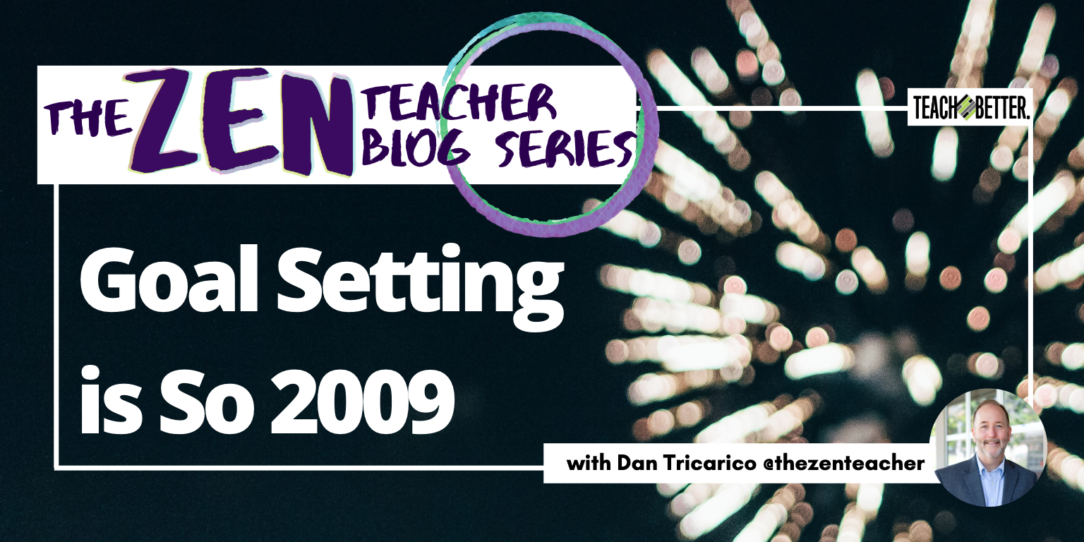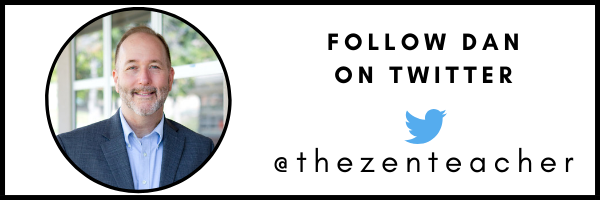In This Post:
- The case against setting New Years Resolutions.
- Approaching goal setting through a different lens… one that will help the chances of success!
- A guideline to set goals that are clearer and more attainable.
- Tiny shifts and time result in new habits and great change.
Once a month, Dan will be writing pieces for the Teach Better blog that show teachers how to reduce stress and improve self-care. He is thrilled to be a part of the Teach Better team and hopes you enjoy this first installment. Please feel free to contact him with any comments or questions.
New Year’s Resolution?
I haven’t made a New Year’s Resolution in over a decade. They don’t work for me. The truth is, I am one of those people who will sign up for the gym in January, but by February I’m back on the couch.
It’s not that I’m not committed. It’s just that I have some gene inside me that sees the resolution as a “have to” and not a “want to.”
Besides, my philosophy is that while I understand that January does represent a new beginning and a clean slate, I don’t see any reason why we can’t decide on goals or make changes at any point throughout the year.
Create a goal in June or September… Why not? That approach has definitely helped me meet more of my aspirations than if I had only begun something January 1st.
A Different Approach to Goal Setting
Goal setting is important. But there are other ways to get to where we want to go. There is a productivity program called The 90 Day Year. It’s created by Todd Herman, a business guru and performance coach who has worked with Olympic athletes and Fortune 500 CEOs.
Goal setting is important. But there are other ways to get to where we want to go. Click To TweetThe 90 Day Year suggests that instead of making goals, sometimes it’s a matter of deciding what you want to start doing, stop doing, do more of, do less of, and continue doing.
This dynamic works very organically with how I approach my life and has been very successful for me, so I’d like to share it with you now.
Start by opening a journal or a Google Doc or even grabbing a sheet of notebook paper and making a chart with the words Start, Stop, Do More, Do Less, and Continue at the top of each column. Then, fill the columns according to your goals, desires, and aspirations. Choose elements that you feel will improve the quality of life.
A Goal Setting Outline
Start.
What things do you want to START doing? Do you want to start playing guitar? Exercise three times a week? Learn Spanish? Write more? Spend more time with your family?
Write down, and then find time for, those things that you’ve been wanting to begin, but that you have yet to commit to.
Stop.
What do you want to STOP doing? Complaining? Staying up too late? Eating nachos? (In which case, we can’t be friends. Sorry). What habits or rituals are keeping you from the life you want to lead?
Jot them down in the Stop column and then jettison those behaviors sooner rather than later.
More.
What do you want to do MORE of? This is stuff you’re already doing, but you are now realizing that these are the activities that you enjoy and love, that are in some way rejuvenating and fulfilling. The key is to figure out how to do these more often.
Do you want to listen to music more frequently? Hike? Go to live theater?
List activities that feed your soul and then make them happen again and again.
Less.
What do you want to do LESS of? These are activities and obligations that no longer serve you, the duties that suck your energy and leave you tired, wasted, or spent.
Do you need to drop out of the book club you’ve been in since The Carter Administration? Resign from the church committee? Ask someone else to do the vacuuming so you can pick another chore you like better?
Stop being a part of the PTSA (I know, but sometimes drastic measures are called for. . .)?
Continue.
This is the fun one. What things are already happening your life that are making it successful?
In other words, what things do you need to continue? Are you crushing your lesson planning? Is your classroom management on point? Do you succeed in having loving and nurturing relationships with your loved ones?
We often focus on the areas of our lives that aren’t working (which is wise), but why not also take a peek at the things that are already humming along and that you should keep doing? It’s definitely a motivator.
According to Herman, the starting and stopping columns are the hardest, followed by what you should be doing more and less of, with that which we should merely continue being the easiest. And this makes sense.
Goal Setting Made Simpler
I find that thinking in these terms makes behavior modification and goal setting much, much easier. Mainly because it’s stuff I’m already doing. I just need to determine what small modifications and adjustments need to be made to whatever’s already happening.
The key is to remember that none of the entries have to be large, Mt. Everest-scaling, Go-For-Broke changes. In fact, you’re less likely to accomplish them if they are (let that sink in, as the meme says).
Think in terms of Tiny Shifts. In my book Sanctuaries: Self-care Secrets for Stressed Out Teachers, I talk about an equation I created:
TS + T = NH
This stands for Tiny Shifts Plus Time Equals New Habits.
That means you can make small changes if you want, but it’s the plus time part that is critical. Practicing those tiny shifts over time is what ends up solidifying the habit.
I’m not going from sitting on the couch binge-watching Stranger Things to running a marathon. That’s not going to happen. But maybe I can decide to take a short walk every Wednesday afternoon. That’s doable. But I must commit to doing it EVERY Wednesday afternoon until the habit is ingrained.
[scroll down to keep reading]
There is a new year on the horizon. And most likely, all of us are looking to make some changes. I hope that some of those changes involve being kinder to yourself and taking better care of YOU!
Sometimes the first steps to an effective self-care plan are knowing what to start, stop, do more of, do less of, and what to continue. It is often through these guidelines that we can get closer to becoming the teacher (and person) we’d like to be.
ABOUT DAN TRICARICO
Dan Tricarico has been a high school English teacher for nearly thirty years. He is also the author of The Zen Teacher: Creating Focus, Simplicity, and Tranquility in the Classroom (DBC, Inc. 2015) and Sanctuaries: Self-Care Secrets for Stressed Out Teachers (DBC, Inc. 2018). In his spare time, he enjoys writing, listening to music, reading mystery novels, watching movies, and staring out of windows. One of his first loves is writing poetry, and he has published many poems both in print and on-line.



